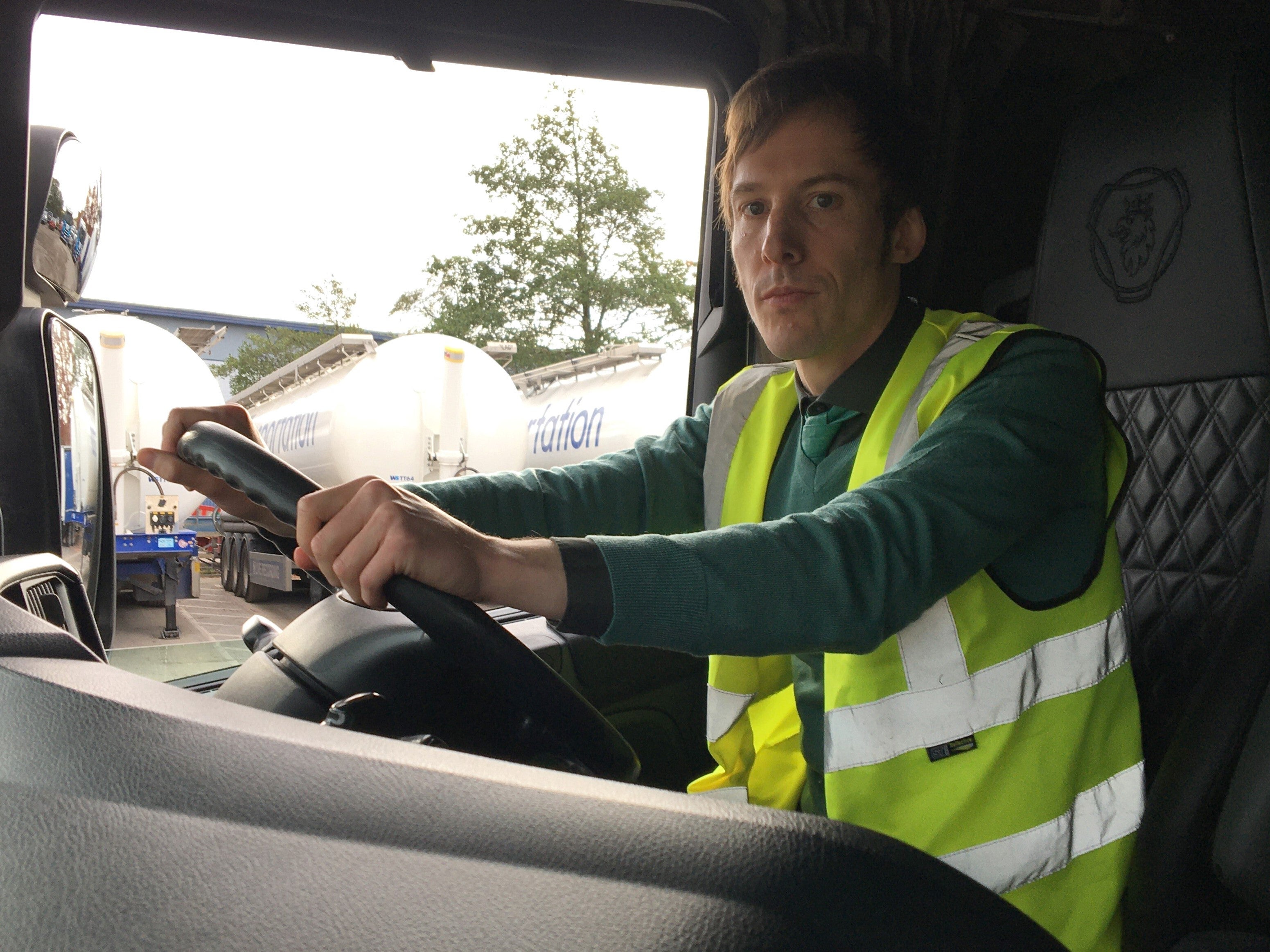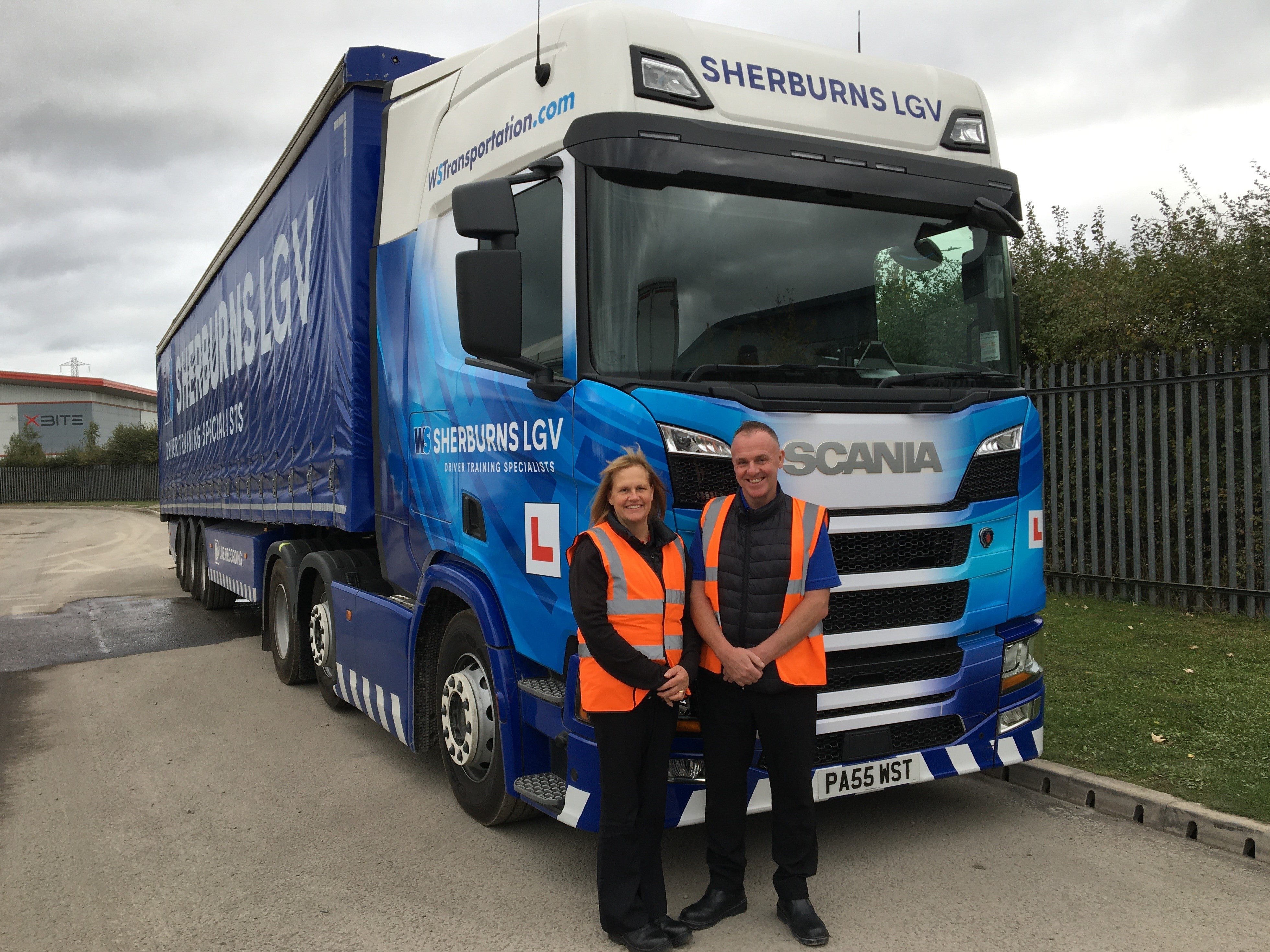HGV driver shortages: My morning at the wheel of the road’s biggest beast
New rules are to make it easier to become an articulated lorry driver. Colin Drury enjoyed a taster lesson but wonders if the change could risk road safety…


Your support helps us to tell the story
From reproductive rights to climate change to Big Tech, The Independent is on the ground when the story is developing. Whether it's investigating the financials of Elon Musk's pro-Trump PAC or producing our latest documentary, 'The A Word', which shines a light on the American women fighting for reproductive rights, we know how important it is to parse out the facts from the messaging.
At such a critical moment in US history, we need reporters on the ground. Your donation allows us to keep sending journalists to speak to both sides of the story.
The Independent is trusted by Americans across the entire political spectrum. And unlike many other quality news outlets, we choose not to lock Americans out of our reporting and analysis with paywalls. We believe quality journalism should be available to everyone, paid for by those who can afford it.
Your support makes all the difference.On a nondescript industrial park just off the M1, Jenny Sherburn is stood in the portable cabin that constitutes her office looking out at a handful of parked HGVs.
“They’re killing machines,” the 53-year-old says matter-of-factly. “Have a small accident in one of those and people can die.”
While this is self-evidently true – it’s 44 tonnes of thundering steel and glass – it is not, I confess, necessarily something I want to hear at this moment.
For Jenny runs WS Sherburns, a HGV driver training school based at the sprawling Markham Vale industrial development in Derbyshire. And I – someone who has never driven anything larger than a Peugeot 208, and even that with no great distinction – am about to have a taster lesson in one of these 16-metre long monsters.
I am passed a fluorescent jacket and the keys. “Enjoy it,” she says cheerfully.
If this situation seems vaguely surreal – and, believe me, when you’re accelerating in something the same length and weight as a sperm whale, it does – it is one the government hopes tens of thousands of Brits will sign up for from next month.
In a bid to ease the crippling haulier shortages that first threatened petrol supplies and now threaten Christmas, transport minister Grant Shapps is effectively making it easier to acquire a HGV licence.
Fancy signing up to our politics newsletters? Click to find out how you can sign up for free
No longer will those wanting to captain such vessels have to hold a separate certificate for first handling smaller, rigid lorries. Rather, from 15 November, anyone with a regular car licence will be able to book in to be trained, take their test, and, if they pass, immediately get a job out on the road in the biggest class vehicle of all.
Exactly how safe such changes can be, however, remains something of a moot point.
Paul Mummery, spokesperson with the Road Haulage Association, says the body has no concerns because the “testing standard will remain the same”, while the United Road Transport Union appears satisfied there will be no extra risk.
And yet…
“There’s nothing right now to stop someone getting their Class C licence [for smaller lorries] and then moving straight onto getting their Category C+E [articulated HGV lorries] so, in theory, all this does is streamline that,” says Sherburn. “But, in reality, at the moment, most drivers will have a couple of years [driving smaller trucks] before they move up. They are experienced in big vehicles before they get into the biggest. So, now, yes, there will be more people driving [HGVs] without that experience.”
Will that impact on safety? A pause. “Well, it won’t improve it, will it?” she replies.

Sitting inside a HGV cab itself is to be acutely aware that you are suddenly very much the boss of the road.
Behind its vast wheel, it feels every bit the beast it looks from outside. It is, I admit, not an unpleasant sensation to realise you could send every other road user scattering with a simple flick of an indicator. Although when I mention this to Paul Sherburn – Jenny’s husband and partner, and my instructor for the day – he looks decidedly unimpressed.
“Being a good HGV driver is about having a good attitude,” the 53-year-old tells me. Noted.
Paul himself has been driving articulated trucks – first as a haulier now as an instructor – for 30 years and has loved every moment of it. “If you like driving, it’s the best job out there,” the father-of-two says. “I’ve been all over Europe. What better way to see the world than from up in your own cab?”
Yet he too has concerns that, with UK driver shortages estimated to currently stand at 100,000, the new testing system – as well as the rising wages – may attract unsuitable people.
“We had a group of taxi drivers here a few weeks ago,” he says. “They’d seen the salaries and wanted to convert to trucks. But, apart from the wages, were their hearts in it? Had they thought of all the responsibilities that come with driving something like this? Of being away from home? I’m not so sure. And that’s important because you have to take pride in this work, or you will start getting distracted.”
Sherburns own HGV driving courses run for an intense 20 hours and take place almost exclusively on-road but, today, my own lesson is confined to the company’s sprawling lorry park base.
Of the vehicles themselves, plenty has changed over the last couple of decades to make them safer.
Whereas once drivers had to wrestle with up to 16 gears and a wheel that could be as stiff as manhole cover, the machines are now almost exclusively automatic and come with power-assisted steering. There are cruise control options, air-cushioned seats and – in many modern lorries – sensors which automatically apply brakes if it approaches anything too closely. The mirrors – all five of them pointing at all sorts of angles – are as big as something you’d hang in your hallway to check how your hat looked.
To find out what others are saying and join the conversation scroll down for the comments section or click here for our most commented on articles
It’s harder to crash than not to, I blurt out breezily as Paul explains all this – although, when I’m later white-knuckling the wheel despite topping out at no more than 10mph I am altogether less mouthy.
Operating the thing isn’t all that different to a car (although my car feels like a go-cart afterwards) but taking corners with such a vast trailer cutting your turning circle on one side and enlarging it on the other feels like having to complete a physics problem in motion. Reversing – where you have to turn right to go left and left to go right – is a whole other-level conundrum. As I jack-knife away from where I should be I suddenly have a new-found respect not only for everyone I’ve ever seen slotting these behemoths round cul-de-sac corners but also for Sir Keir Starmer for only hitting the one cone when he did a similar mock exercise earlier this month. There are no cones today but Paul’s face assures me that, metaphorically speaking, I’ve taken out about a dozen of them.
“It takes bit of getting used to,” he assures me.
A smashed curb at the site – where they currently train about 100 drivers a year – is proof that I am not the only one who has struggled.
Want us to report on an issue that matters to you? Contact us by clicking here
Indeed, the pass ratio of the test tells a similar story: that this is not an easy skill to master. Currently only 56 per cent of exams taken nationally result in success – a number expected to stay roughly the same even with the new streamlining.
As I hand back the keys and fluorescent jacket to Jenny, she asks if I’d fancy doing a full course and taking it out on the nearby M1. Too intense for me, I admit. The government will be hoping tens of thousands of others do not feel the same way.
Join our commenting forum
Join thought-provoking conversations, follow other Independent readers and see their replies
Comments